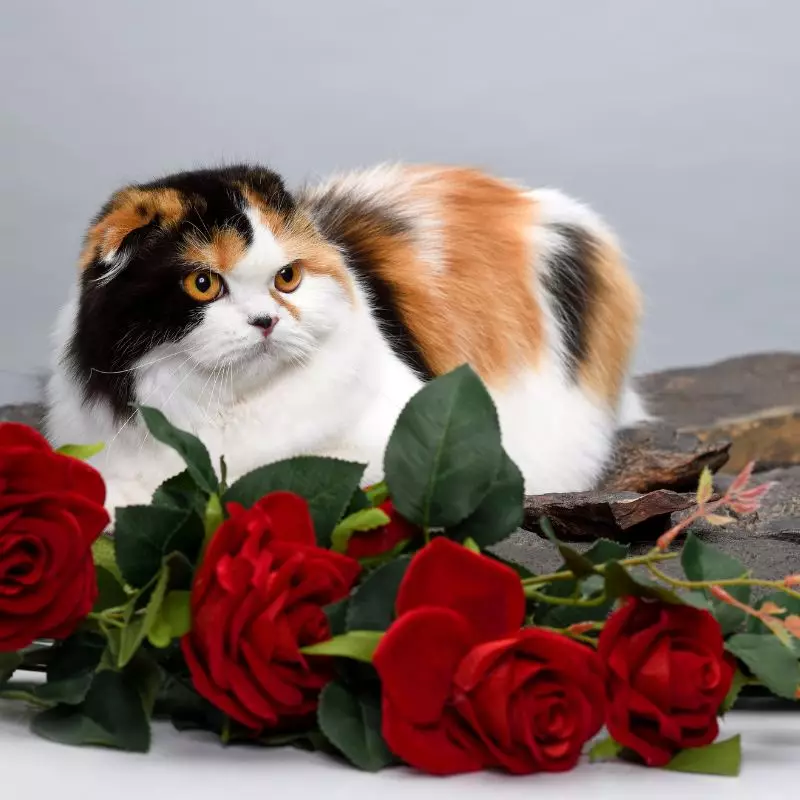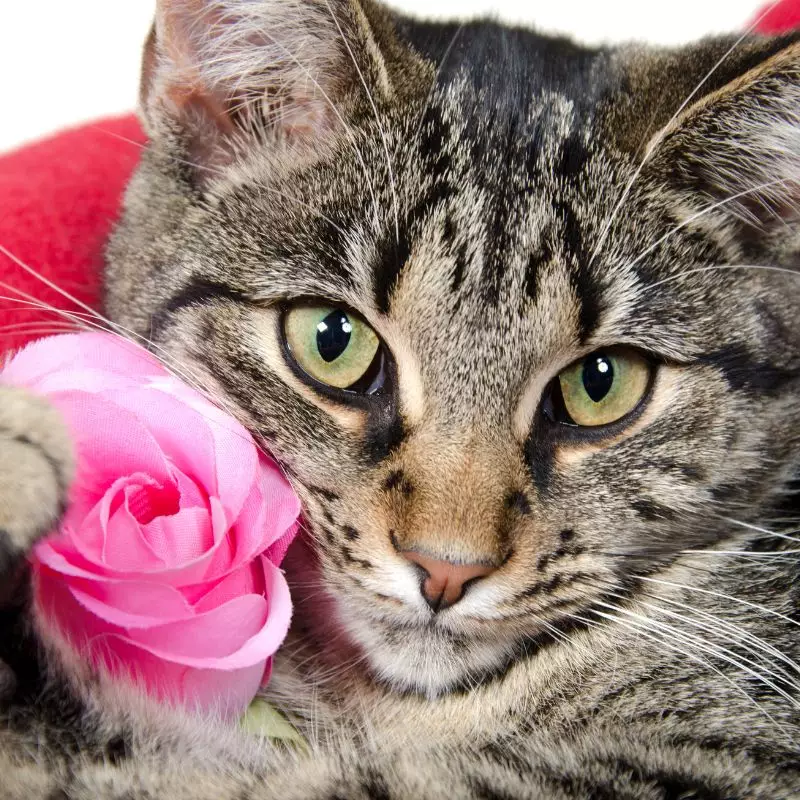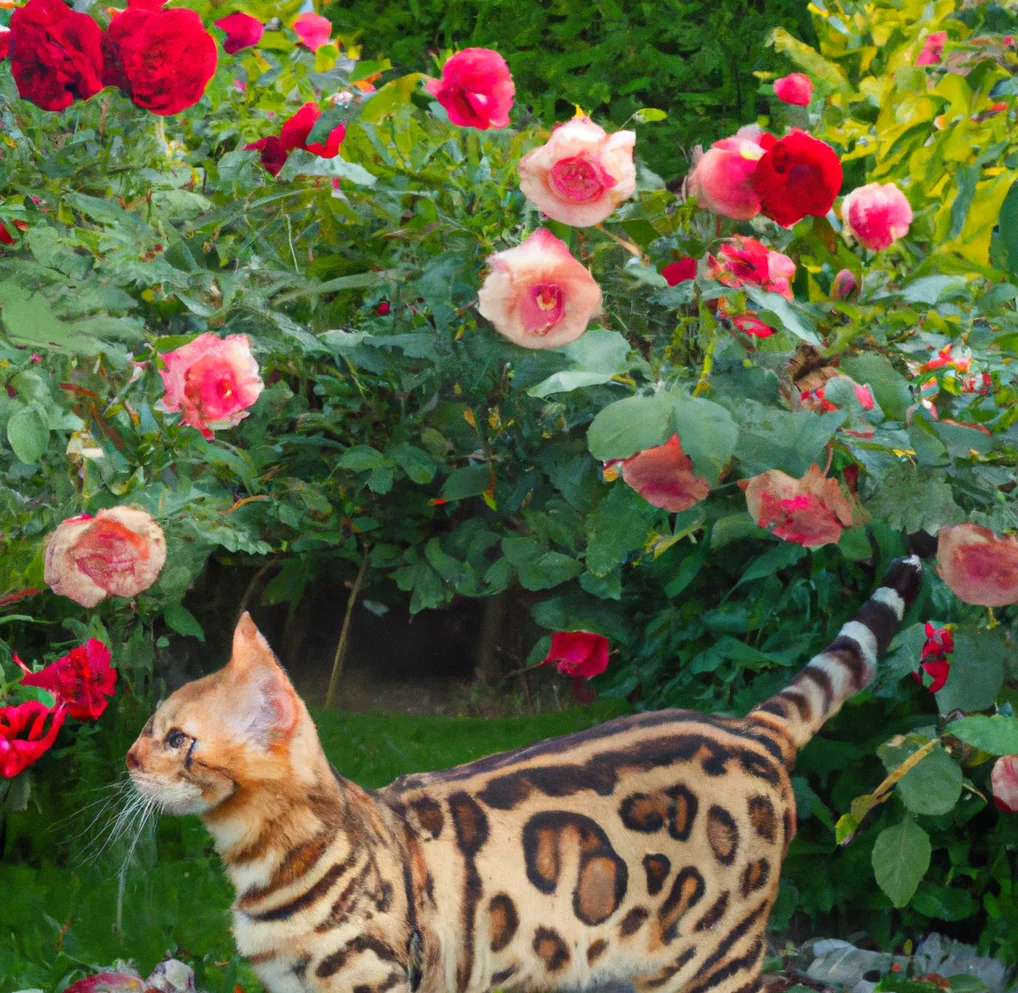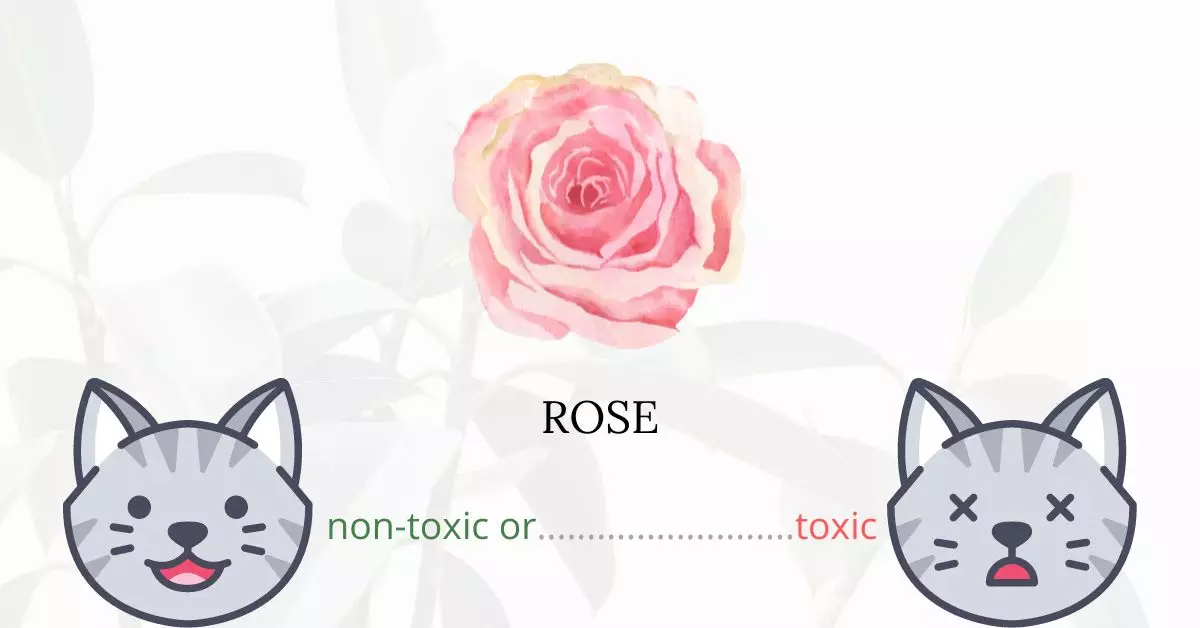No, roses are not toxic to cats. While roses themselves do not contain substances that are harmful to felines, it’s essential to note that their thorns can pose a physical threat. So, while the plant isn’t poisonous, precautions should be taken to ensure cats don’t hurt themselves on the thorns.
This article was crafted in collaboration with a team of experienced DVMs (doctors of veterinary medicine). Through their invaluable insights, we strive to provide accurate and up-to-date information on the potential risks associated with various plants, focusing on roses in this instance. Furthermore, to ensure utmost accuracy, our research encompasses trusted sources such as the ASPCA and PetMD.
Notably, the American Society for the Prevention of Cruelty to Animals (ASPCA) includes roses on its list of non-toxic plants, making them a suitable choice for gardens where dogs and cats roam.
You should not confuse real roses with any other plants with the word “rose” in their name, which is toxic for cats. Here are some examples:
- The Christmas Rose (Helleborus niger)
- The Desert Rose (Adenium obesum)
- Moss Rose (Portulaca oleracea)
- Rosebay (also called rhododendron)
- Primrose (Primula vulgaris)
Can Cats Eat Rose?

It wouldn’t harm your cat if he or she had a bite of a rose petal or leaf. As long as only a small portion was consumed, feline owners should not worry as much. You should worry more about the rose thorns that might injure your cat.
Another thing you should also be concerned about is the products that are used on roses and other plants. There are certain fertilizers and pesticides that have toxic components and leave traces on plants. In case your cat ingests these particles, they may suffer from poisoning.
What is Rose?

A rose, also known scientifically as rosa species, is a woody perennial flowering plant in the Rosaceae family. There are hundreds of species and tens of thousands of rose cultivars. They are a group of plants that can be erect shrubs, climbing plants, or trailing plants with sharp prickles on their stems.
Rose flowers, which come in a variety of sizes and shapes, are well known. Their flowers are typically big and showy and come in a variety of colors, including white, yellow, and red. There are a few rose species in Europe, North America, and northwest Africa, but the majority of rose species are found in Asia.
Roses are known best as ornamental plants grown in gardens and sometimes indoors for their flowers. They’ve also been used in commercial perfumery and cut flower crops. Some are used for landscaping, hedging, and other functional purposes. Roses are also popular domestic and commercial cut flower crops. They are typically harvested and cut when in the bud and refrigerated until ready for display at their point of sale.
Keeping Cats Away From Rose

You may use repellents to deter your cats away from your roses. Because cats hate citrus odor, you may try placing citrus peels or sprinkling diluted lemon juice on the plants.
Coffee grounds also act as a good deterrent. You can use your used coffee grounds or try asking your local coffee shop for some. Scents of chili oil, tabasco, and vinegar are also detested by cats.
Keeping your cats engaged also helps in preventing them from getting near your plants. Bored cats are more likely to play and nibble on houseplants. Provide “scratching posts”, wooden posts, or other branches for them to scratch on. Give stimulating toys and keep them well-fed too.
Plants to Avoid For Your Cats
If you are a cat owner and unsure if the plants growing in your yard are harmful to your cats, check out this list of toxic plants for cats. You can also check our list of non-toxic plants for cats.





